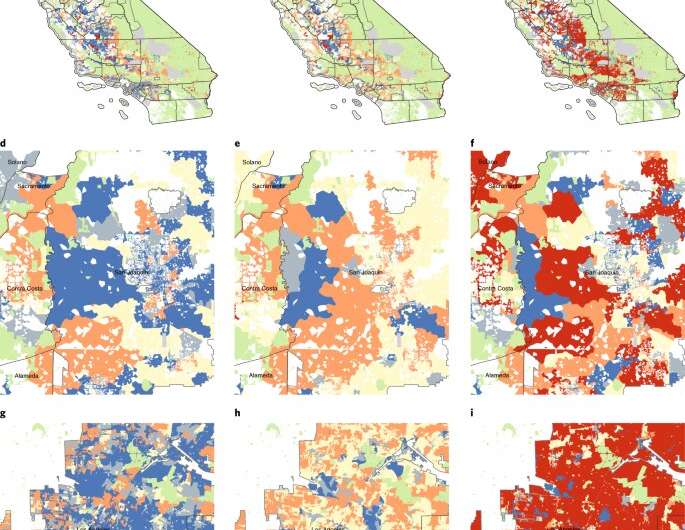Inequality built into the grid

It is known that future uptake of distributed energy resources like wind and solar could be limited due to constraints in electrical grids. Now, a study from Berkeley researchers shows that grid limitations in California could also exacerbate existing racial inequities by limiting access to renewable energy in different communities and economic classes, making it even more difficult to overcome inequity in renewable energy adoption.
Published today in Nature Energy, the study was authored by Anna Brockway, a Ph.D. student in the Energy and Resources Group (ERG), along with ERG professor Duncan Callaway and then-undergraduate student Jenny Conde.
Distribution grids are the last mile of the electricity grid, bringing power from long-distance transmission lines to customers. Potential increases in current flow—brought about by household solar photovoltaic systems, electric vehicles, or increased loads due to household electrification—can lead to high temperatures and voltages that can constrain the distribution circuits to which these systems are connected. As such, in any given electric circuit, the number of households that can install solar electricity generation or electrify is limited. Solar energy adoption at the household level is known to exacerbate existing racial and economic inequities, due in part to the upfront investment needed and logistics of siting that favor owner-occupied homes with sufficient roof space. However, the relationship between grid hosting capacity and these inequities has not yet been examined.
In order to analyze potential limits to the integration of new distributed energy resources, Brockway, Callaway, and Conde mapped the grid capacity of California's two largest utility territories, then analyzed the results in conjunction with corresponding demographic data. The findings reveal that, under current conditions, the grid only has enough capacity to support less than half of the households in these territories with the adoption of solar photovoltaic systems to meet their electricity needs. Grid limits were also found to reinforce demographic disparities in access, with Black-identifying and disadvantaged communities having disproportionately less grid capacity to host renewable solar energy at the household level.
The authors conclude that these grid capacity limits may impede household-level solar deployment and efforts to increase equity in solar adoption. If existing inequities are to be addressed, grid capacity limits will need to be strategically increased in Black-identifying and disadvantaged communities. Further, they note, significant grid capacity upgrades will be needed to meet California's electric vehicle adoption and residential load electrification goals. In this way, technical limits of the electrical grid, the need for upgrades, and their equity implications must be primary considerations in designing policy for solar deployment and electrification.
"As policymakers target programs to enable California's growing reliance on renewable energy, it will be important to ensure that the benefits from these programs are equitable," said Brockway. She also noted the importance of considering what grid updates are required, considering the significant cost and time involved in improving access. "It may be that alternative approaches like community solar could provide the same economic and environmental benefits to a diverse range of customers, without requiring the same grid upgrades," she said.
More information: Anna M. Brockway et al, Inequitable access to distributed energy resources due to grid infrastructure limits in California, Nature Energy (2021). DOI: 10.1038/s41560-021-00887-6


















